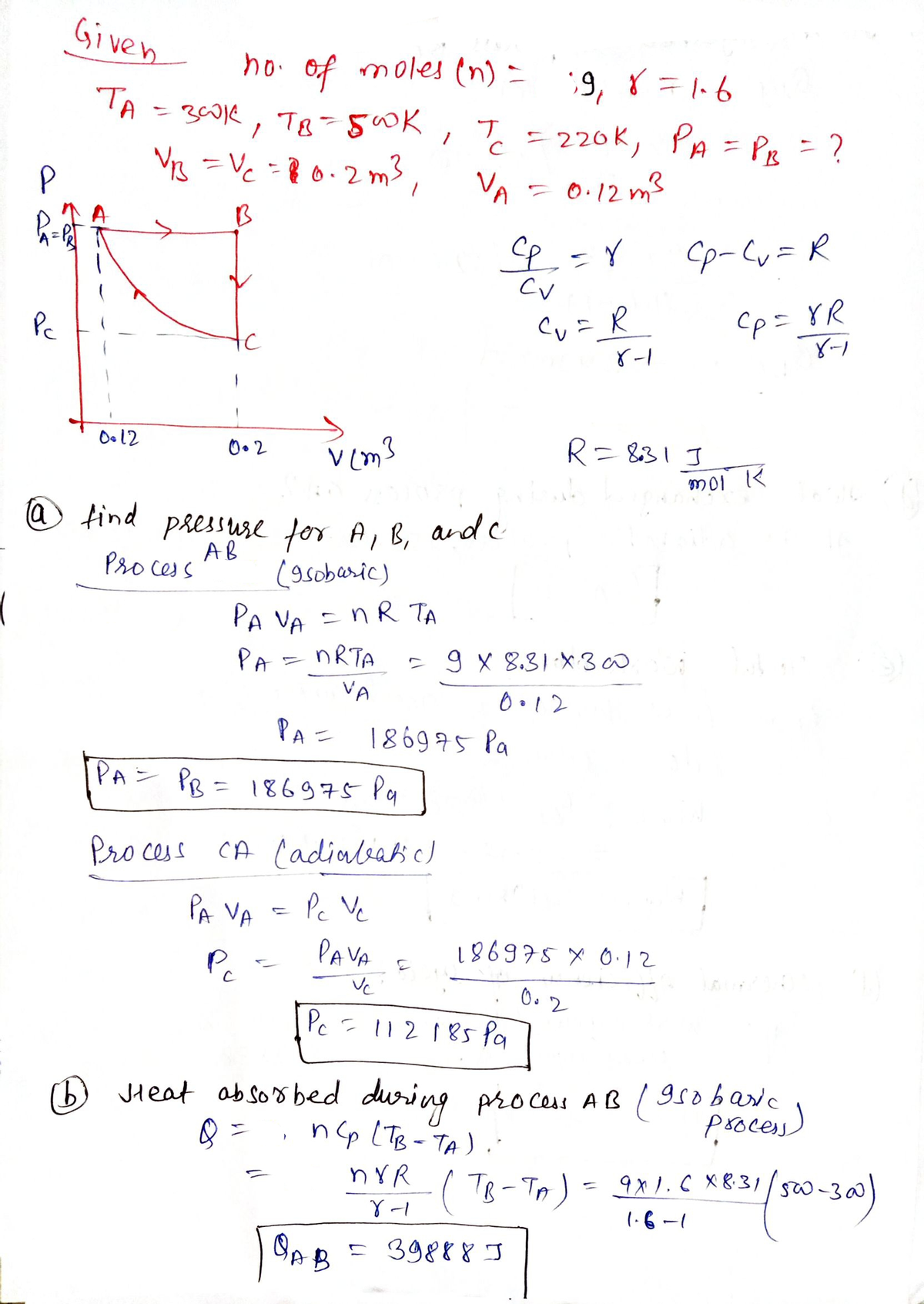a. Find the pressures (in Pa) for states A, B, and C. b. How much heat is absorbed by the gas in the AB process of the cycle? c. How much heat is rejected by the gas in process BC?
a. Find the pressures (in Pa) for states A, B, and C. b. How much heat is absorbed by the gas in the AB process of the cycle? c. How much heat is rejected by the gas in process BC?
Related questions
Question
Please help with 1

Transcribed Image Text:2. A heat engine performs the cycle ABCA with 9 moles of an ideal gas. Path CA is an
adiabatic process. Temperatures at A, B, C are shown on the diagram, as are the
volumes at A, B, C.
(y = 1.6 for this gas.)
a. Find the pressures (in Pa) for states A, B, and C.
b. How much heat is absorbed by the gas in the AB process of the cycle?
c. How much heat is rejected by the gas in process BC?
d. How much heat is exchanged by the gas in process CA?
e. What is the total work done in the entire cycle?
f. What is the thermal efficiency of the engine?
g. How does the result in part (f). compare with the efficiency of a Carnot engine
operating between the same maximum and minimum temperatures?
PA
(300 K)
(500 K)
в
C (220 K)
V (m')
0.12
0.20
Expert Solution
Step 1
I will solve only 1st three according to the guidelines.

Step by step
Solved in 2 steps with 2 images
